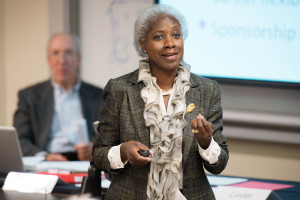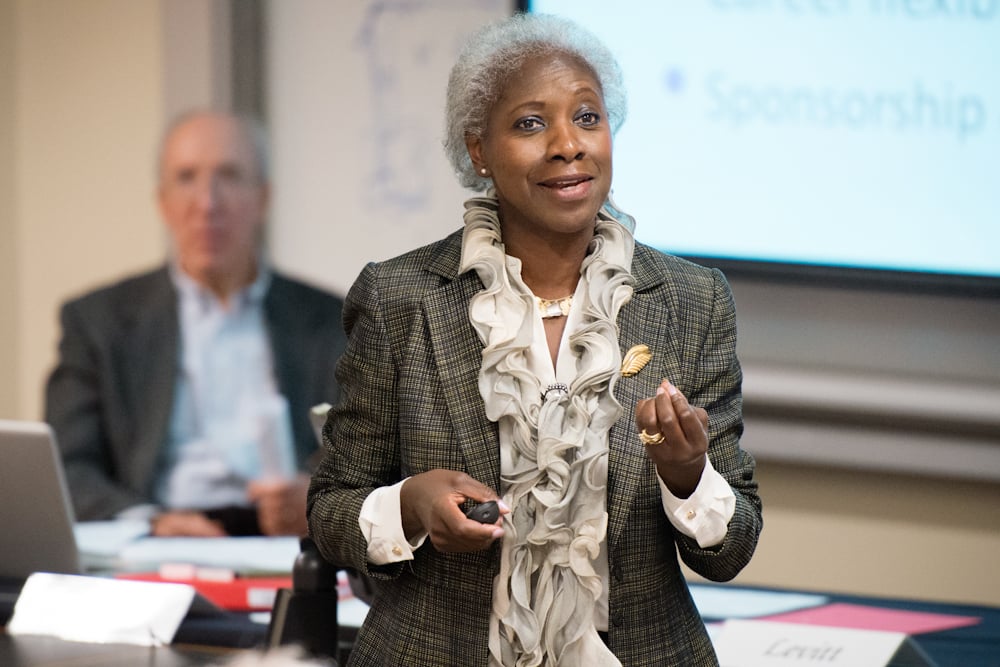The Faculty Senate heard reports on faculty diversity and conflicts in academic scheduling at its Thursday meeting, with the latter report potentially opening the door to a comprehensive overhaul of students’ daily course schedules.

Senate Chair Raymond Levitt, professor of civil and environmental engineering, opened the meeting by briefly reflecting on the Stanford football team’s victory in the 2013 Rose Bowl and applauding the selection of Lucy Shapiro, professor of developmental biology, as a recipient of the National Medal of Science.
Levitt also reviewed a number of topics that senators suggested merited the body’s consideration before the end of the academic year. Topics include faculty oversight over the Department of Athletics; the rapid increase in the cost of college education; the popularity of the peer-reviewed course evaluation website CourseRank; and the number of academic Honor Code violations.
“[Cheating] has been a huge topic for us,” said Eric Roberts, professor of computer science.
Roberts suggested that full disclosure of his department’s rising tally of Honor Code violations would mean “you would get Stanford if you searched for cheating on the web rather than Harvard.”
Faculty also expressed concern about CourseRank’s popularity among students, singling out the website’s aggregation of reviewing students’ grades as potentially leading other students to pick courses that appear more leniently graded.
“It’s one way that they can get comments on the effectiveness of the instructor,” countered Dean of Research Ann Arvin, noting that Stanford doesn’t publicly release students’ course evaluations. “There are benefits to the students.”
Provost John Etchemendy Ph.D. ’82 took issue with the characterization of tuition costs as being universally higher for students, noting that increased financial support by the University has reduced the burden for most students.
“We’ve been steadily declining throughout the 2000s… due to financial aid,” Etchemendy said.
Earlier starting class time?
University Registrar Tom Black framed his report on class scheduling conflicts as a pressing challenge for administrators, noting that over 1,000 students voluntarily schedule class conflicts each quarter in the lack of any University oversight.
Black identified a concentration of classes from 10 a.m. to 2 p.m. as a major cause of the conflicts, proposing instead a more regimented block system of classes starting as early as 8:30 a.m. He acknowledged the difficulty of undertaking such a significant change, as well as the likelihood of prompting broad student discontent, but argued that such a system would ultimately offer students more flexibility.
“I don’t think we should be reluctant to go to the 8:30 starting time,” said Richard Saller, dean of the School of Humanities and Sciences. “[Previous attempts at similar scheduling] didn’t seem to create a problem.”
Senators expressed skepticism about students’ willingness to attend earlier classes, noting that even 9 a.m. classes suffer from low attendance, and expressed concern about the potentially detrimental impact of earlier starting times on students’ learning, which the University has yet to study. Senators also called for greater involvement by administrators in regulating obvious conflicts between classes.
“There are conflicts all over the place,” Etchemendy said. “There’s no way to know what are relevant conflicts…It’s really important that departments pay attention to what their students are taking [and coordinate accordingly].”
Gender equilibrium 28 years away
Karen Cook ’68, vice provost for faculty development and diversity, and Hannah Valantine, School of Medicine senior associate dean for diversity, delivered a presentation of faculty losses and gains, as well as the progress of efforts to increase faculty diversity.
Faculty numbers have grown slightly over the last decade, from 1699 professoriate faculty members in 2001 to 1934 in 2011. Over the same period, the proportion of female professors grew from 13 to 21 percent of total faculty, though the proportion of female assistant and associate professors remained relatively constant.
The number of under-represented (URM) faculty members grew by nearly a third over the same period, from 101 to 133. The proportion of URM and female faculty who received tenure increased across the board.
“We need to be a bit more proactive [about hiring URM faculty],” Cook said. “That was the same news I gave two years ago… The good news with women is that they’re moving up the ladder.”
Valantine drew specific attention to the School of Medicine’s efforts to increase diversity in leadership positions, pointing to grants, workshops and networking opportunities as means of prompting female and URM faculty to aspire to higher positions and complement the School’s existing expertise.
“The social justice aspect is important, but I think we’ve transcended that,” Valantine said. “Without diversity, we are not going to be able to solve complex problems.”
While the number of female leaders at the School of Medicine has increased by small amounts over the last decade, Valantine emphasized at the current rate, it would take 28 years until gender equilibrium is reached — a number she said was far too long. She called for greater intervention in hiring decisions and workplace relations.
“The workplace must adjust to meet the needs of the [modern worker],” Valantine said. “It’s going to call for a change in the culture.”
Jeremy Weinstein, professor of political science, expressed concern that current University hiring trends — largely drawing from a pool of more experienced but less diverse professors — risks delaying the ability to attain full gender and racial equilibrium.
“Leadership matters,” said Andrea Goldsmith, professor of electrical engineering. “It’s not enough to have it come just from the top. It needs to trickle down all the way to the department chairs.”
Roberts questioned a common practice of not hiring the University’s own recent doctoral graduates immediately, noting that many female or URM candidates are instead hired by peer institutions.
“This sounds like a reasonable position from first principles, but it has this inevitable discriminatory effect,” Roberts said. “This is probably not something to be so firm about, if your goal is to increase diversity.”
The Senate will hear reports from Director of Athletics Bernard Muir and from the Committee for the Review of Undergraduate Majors at the body’s next meeting on Feb. 7.
